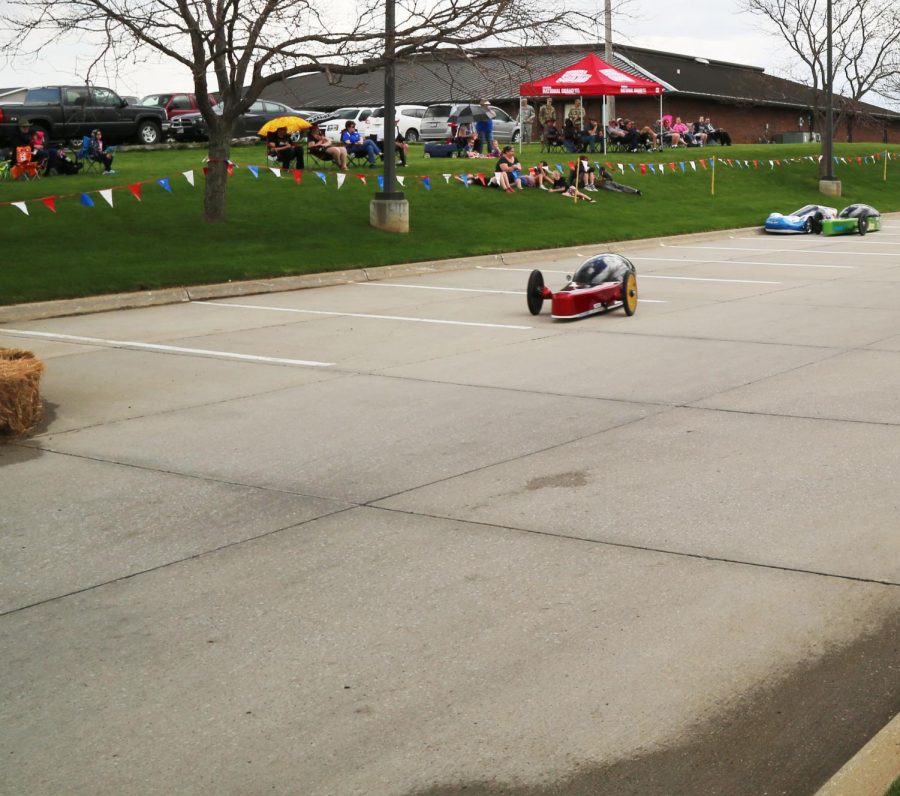Hat Trick
Elkhorn Power Drive Wins Third Straight State Championship
They did it again. The Elkhorn Power Drive electric car team won it’s third straight State Championship May 5th in Hastings.
Power Drive is a club most students haven’t heard much about. The group tends to keep to themselves and lets its accomplishments fly under the radar. Despite the low profile, this club has been one of Elkhorn’s most dominant competitive teams. The most recent state championship is the team’s third in a row, and its fifth time in the last six years.
Freshman Chris Graham said the team works hard to achieve their success, but also has a good time.
“We joke around as a group,” Graham said. “It’s really fun to be on the team and learn a lot.”
A veteran member of the group, EHS alum Joe Ehlers, said winning the championship was his favorite memory of the year.
“It was great because it wasn’t raining,” Ehlers said. “And we won.”
Power Drive cars get placed in different classifications and Elkhorn entered four cars in three different classes were used in the races: A1, A05, E4, and S7. “A” stands for advanced, “E” stands for exhibition, and “S” stands for standard. Different classes entail different types and speeds of races, which Ehlers said makes the races exciting and interesting to watch.
In the championship, scores are determined by several factors: documentation, design and construction, braking, maneuverability, and endurance. Documentation, braking, and maneuverability were all judged before the race began. Graham said his main job on the team was to help create the documentation for the cars.
“It’s long hours and tedious work to get the documentation book ready,” he said. “The book shows the mechanics of the car, how we put it together and how we improved it from previous years.
The endurance component isthe bulk of the event with two heats of races lasting 90 minutes each, for a total of 3 hours of racing.
Tournaments for any organization, sport, or hobby can be stressful, and Ehlers said there was a lot of nervousness in the team, and there’s always potential for something to go wrong.
“Nothing catastrophically failed at the championship,” Ehlers said. “However, there were a few love taps between the racing cars, but no serious damage was sustained.”
Graham said beyond the championship, the team’s collaboration and vision for the future were the most rewarding aspects of being on the team.
“Being able to show success and to try to improve the future of technology and aerodynamics are what made it great,” Graham said.
Your donation will support the student journalists of Elkhorn High School. Your contribution will allow us to purchase equipment and cover our annual website hosting costs.

